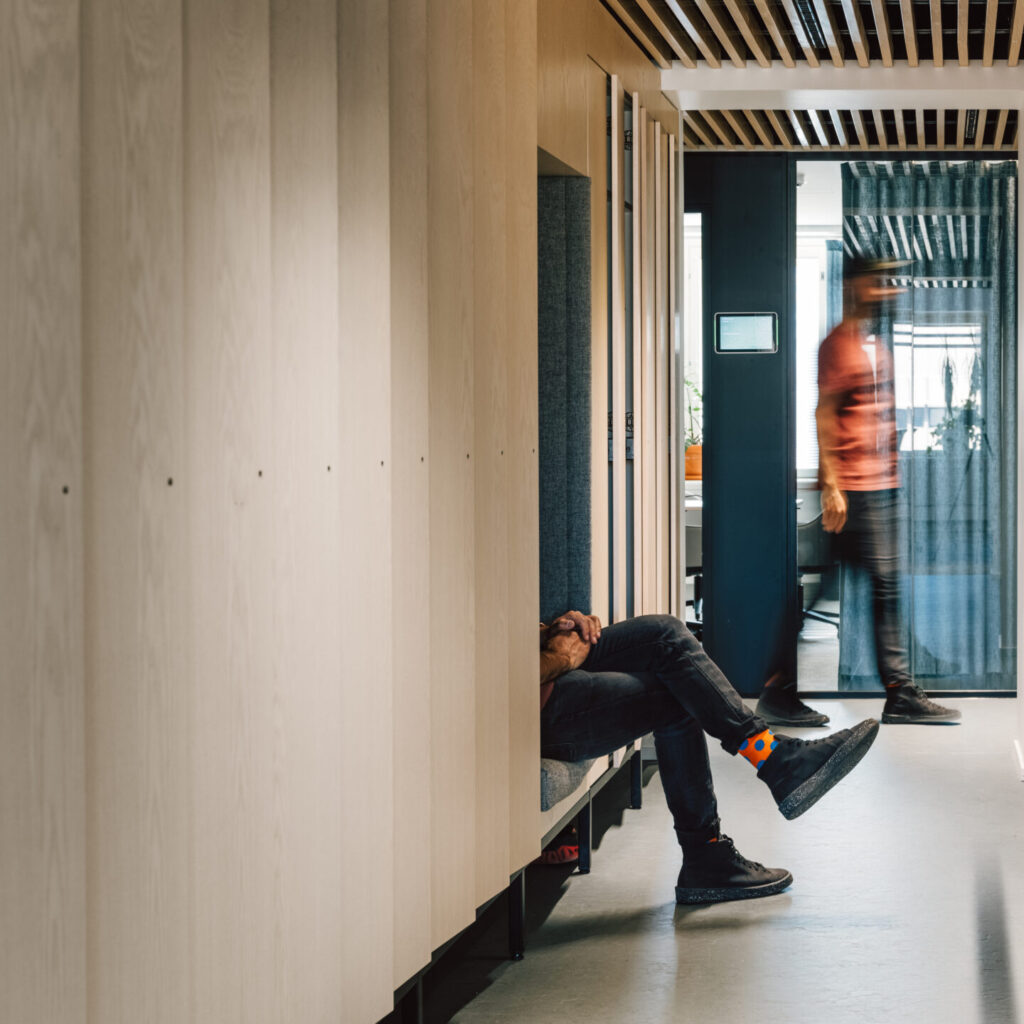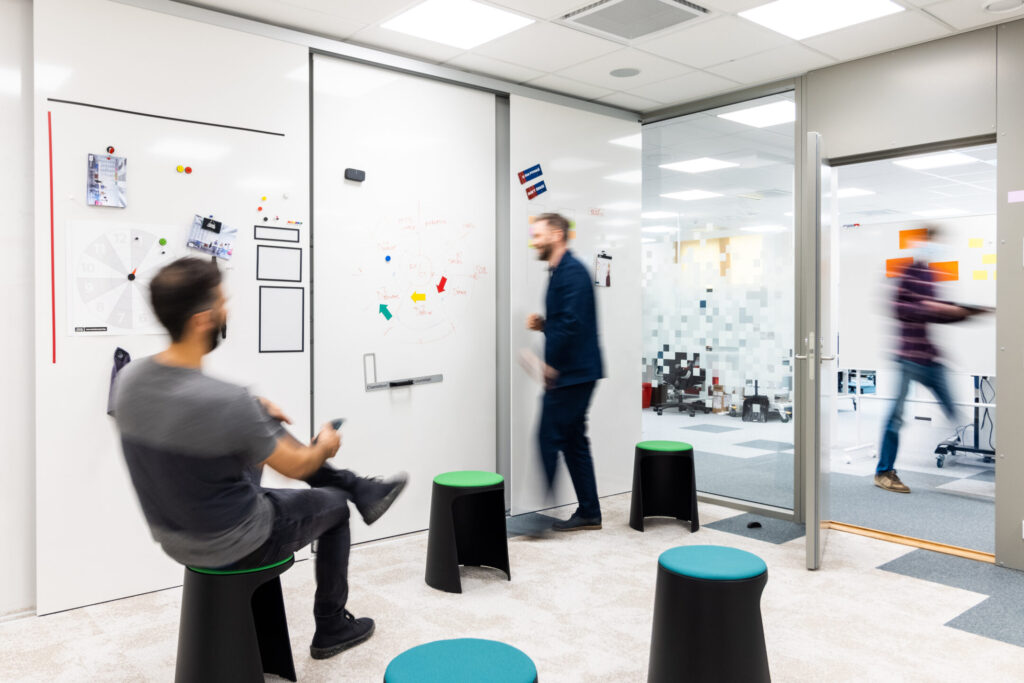The past two years have been in many ways the most disruptive of the past decades.
At the same time, our way of working and the meaning we give to our work and the importance of organizational culture play a very important role in defining what the future will be like after the pandemic.

In this era of accelerated rate of transformation, in which companies are measured by their ability to self-organize, self-manage and adapt, creating a culture of trust has become a key success factor.
At the same time as the organizations have become much more distributed, breaking away from the centralized to redefine where and how work is done, the role of design beyond just the physical has gained importance.
We must focus on how we make use of design to shape that future.

Even before the start of the pandemic there has been a great deal of discussion about the new role of design as design has reached new frontiers and applications.
The challenges brought on by hybrid work are related to managing and organizing the work and workforce, adopting new practices and tools, as well as adapting the physical workspaces.
Design, through its participatory and user centered problem solving, provides for a valuable approach to help companies to transform and tackle these challenges.
Design can help organisations to discover insights and induce internal discussion on work culture and the key values that define a company.
Design also helps companies to create the appropriate environments and services which will ultimately manifest and shape that culture.
This extraordinary time that we are still living has taught us that as organizations we can be productive even if we are working remotely from our homes or from anywhere. It has been proven that having trust in your employees pays back.
Giving employees the power to choose from where and when they want to work is a win-win situation, bringing more flexibility to the lives of the employees while increasing productivity and employee engagement.
Workplace design, though an established practice, has also evolved as the requirements for workspace and the cultures they support have changed now especially by the pandemic.
In addition to being spatially efficient and aesthetically aligned, today’s work environments need to support a variety of changing needs and requirements. Instead of designing spaces, we have moved to design experiential platforms, which are flexible and evolve over time.

When developing these experiential platforms, we are faced with possibly hundreds of different types of employee personas and ways of working.
To understand and define what kind of organizational and employee requirements should be supported, we must involve the users into the process.
The participatory, co-creational and co-design practices help us design solutions that are meaningful and that actually solve challenges that employees, teams and organizations as a whole are facing.
We also need to dive further into the employee experience and the various touch points that they experience during their journey. When defining and designing employee journeys we are required to understand the various social, virtual, physical and financial requirements and what the companies offer to fulfill those needs. As a result we start creating a service platform and culture within the organization.
In organizations that are particularly heterogeneous we need to find a way to create a dynamic and multifaceted culture that will support the changing requirements of the organization. Culture is an infinitely more complex matter than let’s say a simple transformation of the physical environment.
We should look into the factors that constitute and influence that culture: the people and teams within the organization, but also the processes, practices and above all the values and purpose that the work itself gives to the employees.
Once we start to modify the very core of how companies are organized, we need trust.
We are required to convince ourselves that the reasons due to which the organization needs to change are valid. We should also build an atmosphere of trust in-between those driving the transformation and those that are the subject of transformation. We need to trust that the future environment and culture that we are building is better than what we had before
Design helps to envision what the future could be. An employee centered and design driven transformation process will help to develop a culture of trust, an underlying value that will hold the company together. Ultimately companies that invest in developing in their workplaces and employee experience as a part of a holistic organizational culture development programs, will enjoy larger talent pipelines and greater profitability and productivity.
Is the future of work and workplaces something that is being discussed in your organization?
Would you like to learn more about how to use design to discover the future of your organization?
ABOUT THE AUTHOR
Antti Pitkänen
Chief Experience Officer | Founder & Chairman of Agile Work | Member of the board of IFMA Finland Chapter and WEHUB leader Finland.
Antti is an experienced design leader, an expert in leading multidisciplinary design projects through collaborative networks from strategy to implementation in the areas of spatial, product, brand and service design.Antti is a Co-founder, Chief Experience Officer (CXO) and Chairman of the Board. His role is to develop Agile Work’s products and service offering and guide its strategy and culture. In customer projects, he actively participates in orchestrating and curating the holistic employee-, workplace- and customer experience to support companies future direction and growth.



